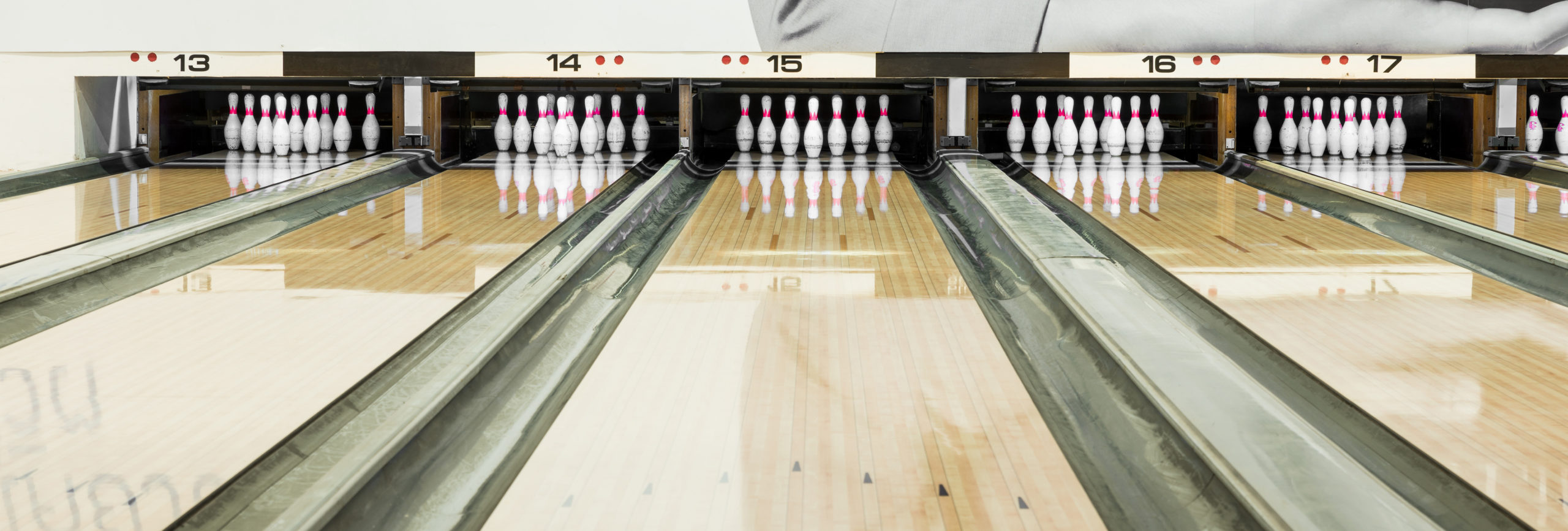Adaptive Equipment for Bowling
Adaptive Equipment for Bowling
The range of equipment for adaptive bowling includes bowling ramps, guide rails, ball pushers, varying types of bowling balls, and wrist supports. Scroll below to learn more…
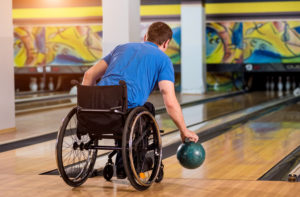
BOWLING RAMPS/RAILS
BALL PUSHERS
BOWLING BALLS
WRIST SUPPORTS
BOWLING RAMPS/RAILS
Bowling ramps and rails are available adaptive equipment for bowling. See below to learn more…
Bowling Ramp
Bowling ramps are commonly used within adaptive bowling. The ramp is simply lined up in the lane directly in the path of the pins so the bowler may push the ball down the ramp in order to play.
Information and photo pulled from Discount Ramps. Bowling Ramp.
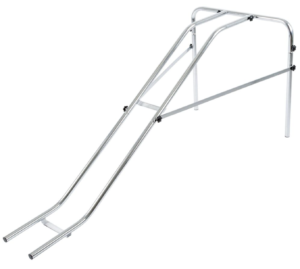
Guide Rail
Guide rails are available for individuals with visual impairments and blindness. These guide the bowler in positioning themselves to throw the bowling ball toward the pins down the lane.
Information and photo pulled from the Wisconsin Council of the Blind & Visually Impaired. Guide Rail.
![GUIDE RAIL BOWLING guide rail for bowling. [Photograph]. https://wcblind.org/2019/11/blind-bowling-an-indoor-sport-that-is-fun-for-everyone/](https://www.challengedathletes.org/wp-content/uploads/2022/12/GUIDE-RAIL-BOWLING-210x300.jpeg)
BALL PUSHERS
Ball pushers are an available type of adaptive equipment for bowling. See below to learn more…
Manual Ball Pusher
Manual ball pushers are intended to help an individual control the direction and speed of the ball when traveling down the lane. To use this device, the individual grips the handle and positions the pusher and bowling ball in the lane. The individual simply pushes their arm forward to propel the ball down the lane.
Information and photo pulled from Discount Ramps. Manual Ball Pusher.
![ball pusher bowling ball pusher. [Photograph]. https://www.discountramps.com/silver-spring-bowling-ball-pusher/p/BWLBP/](https://www.challengedathletes.org/wp-content/uploads/2022/12/ball-pusher-bowling-195x300.png)
Electric Ball Pusher
Similar to the manual ball pusher, the electric ball pusher is intended to achieve increased force and control of the direction of the ball down the bowling lane. This device pushes the ball down the lane once the green button is pushed on the back. There is also switch control for those who use power wheelchairs.
Information and photo pulled from KTIV and Ability Tech. Electric Ball Pusher.
![electric ball pusher electric ball pusher. [Photograph]. https://www.ktiv.com/2022/10/11/ability-tech-unveils-new-piece-adaptive-equipment-help-expand-bowling-all-abilities/](https://www.challengedathletes.org/wp-content/uploads/2022/12/electric-ball-pusher-1-300x169.jpg)
BOWLING BALLS
In addition to standard bowling balls, a selection of bowling balls are available to suit an individual’s preference and abilities. See below to learn more…
Rubber Bowling Ball
Rubber bowling balls are available in varying weight and typically are lightweight at about 1-5 pounds.
Information and photo pulled from Epic Sports. Rubber Bowling Ball.
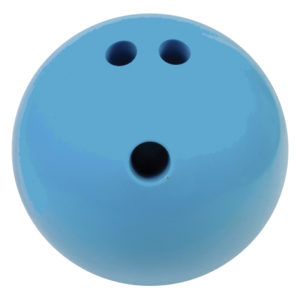
Foam Bowling Ball
Foam bowling balls are another lightweight option for athletes, providing ease with gripping, carrying, and rolling the ball while bowling. These bowling balls are commonly about 1-5 pounds in weight.
Information and photo pulled from Toledo Physical Education Supply. Foam Bowling Ball.
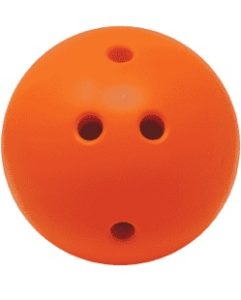
Retractable Handle Bowling Ball
Retractable handle bowling balls have a spring-loaded handle that drops into the bowling ball once released by the bowler. This ball provides ease with gripping the ball while carrying and rolling the ball towards the pins and is available in 6-14 pounds.
Information and photo pulled from Bowling Index. Retractable Handle Bowling Ball.
![retractable handle bowling ball retractable handle bowling ball. [Photograph]. https://www.bowlingindex.com/retractable-handle-bowling-ball.html](https://www.challengedathletes.org/wp-content/uploads/2022/12/retractable-handle-bowling-ball-297x300.jpeg)
WRIST SUPPORTS
Some bowlers wear wrist supports while bowling to protect their wrist from injuries and maintain an optimal hand position while throwing the bowling ball. Many wrist support products are available, and below are just a few examples of wrist braces that can be worn.
Wrist Positioner
This wrist positioner attaches with velcro straps and has removable metal supports in the front and back of the positioner. This device is worn for wrist protection while bowling, and to help you maintain the optimal positioning of your wrist while throwing the bowling ball down the lane.
Information and photo pulled from Bowling Ball. Wrist Positioner.
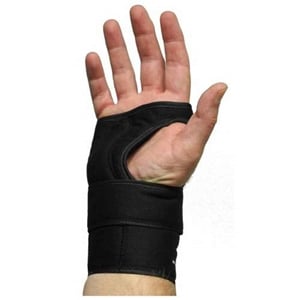
Wrist Guard
This wrist support has a velcro strap that adjusts to fit an individual’s wrist comfortably and helps to keep their wrist cool by reducing heat retention. The compression provided by this device helps to prevent the occurrence of soft tissue injuries while bowling.
Information and photo pulled from Academy Sports Outdoors. Wrist Guard.
![wrist positioner wrist positioner. [Photograph]. https://www.google.com/search?client=safari&rls=en&q=wrist+support+for+bowling&ie=UTF-8&oe=UTF-8](https://www.challengedathletes.org/wp-content/uploads/2022/12/wrist-positioner-2-197x300.jpg)

